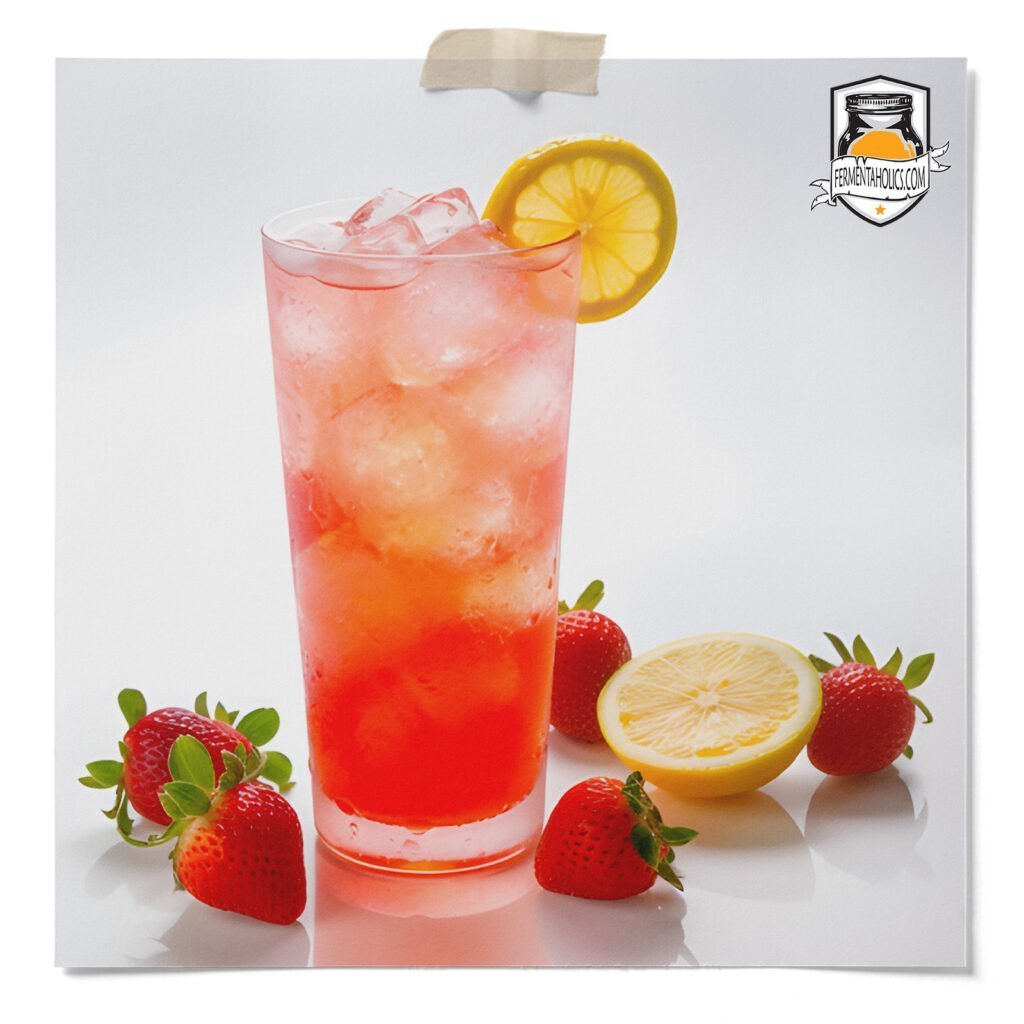
As a kid in the middle of a hot summer, nothing quenched your thirst while pleasing your tastebuds quite like an ice-cold cup of freshly made lemonade. The most amazing things seem to always be the simplest: lemon juice and sugar, two ingredients that make the classic beverage. But add just one more timeless summer flavor and create a drink that was the quintessential summer day companion: Strawberry Lemonade. We take fresh strawberries, lemon juice, and sugar and combine it with water kefir’s perfect blank canvas to make our new favorite drink come June, July, and August. So, scroll down and try out this recipe ASAP, and let the childhood memories and summer fun begin!
It’s important to note that brewing homemade water kefir is almost always a two-step fermentation process. Brewing water kefir is only a one-step process for those who prefer unflavored and mostly flat water kefir. Otherwise, the steps consist of a primary fermentation and a secondary fermentation.
The primary fermentation is the first step of the water kefir brewing process. This is where your water kefir grains transform regular sugar water into the tart and slightly sweet water kefir we love. At the end of this stage, you will have finished water kefir, but it will be flat and, depending on the source of sugar used, unflavored.
The secondary fermentation is the step where you bottle, carbonate, and flavor your water kefir by the addition of sugar and flavors. This step is essentially adding a bit of sugar/flavor to each airtight bottle and letting it ferment a little longer, allowing the yeast to carbonate the beverage in an airtight environment naturally.
💡Since this recipe is for the secondary fermentation, to make this recipe, you’ll need to have kombucha that has finished the primary fermentation and is ready to bottle.
This recipe makes one 16 fluid ounce bottle. Before beginning this recipe, you will want to:
16 FL Oz Bottles
10
Minutes2-10 Days
This strawberry lemonade water kefir recipe is for one 16 fluid ounce bottle. For a quart batch, make two bottles. To scale this recipe to a quart batch, multiply the ingredients by two or toggle the serving size up to two above. Before bottling your water kefir, remove the water kefir grains and reserve them for your next batch.
16 Oz Water Kefir from a completed primary fermentation
2-3 Strawberries
2 tbsp Lemon Juice
1 tsp Sweetener
1 16 Oz Water Kefir Bottle(s)
Measuring Spoons
Blender
You can either puree the strawberries in a high-speed blender or quarter them, all depending on whether you want the final product altogether or strained before drinking. We recommend testing out both ways to find out which one you prefer!
Place clean 16 oz bottle in the sink.
Add the prepped strawberries, lemon juice, and sweetener into each bottle.
Using a funnel, slowly pour Water Kefir into the bottles, ensuring there is about one inch of headspace left from the top of each bottle. The Water Kefir may foam up as you pour so be sure to pour carefully.
Tightly place caps on each bottle.
Keep bottles at room temperature for 2-10 days; it will carbonate faster at higher temperatures and slower when cold.
Burp the bottles as necessary to release excess pressure. This is done by removing the cap to allow built-up pressure to escape then placing the cap back on.
Chill in the refrigerator once you’re happy with the carbonation levels. Based on preference, you can serve as is or strain before drinking.
